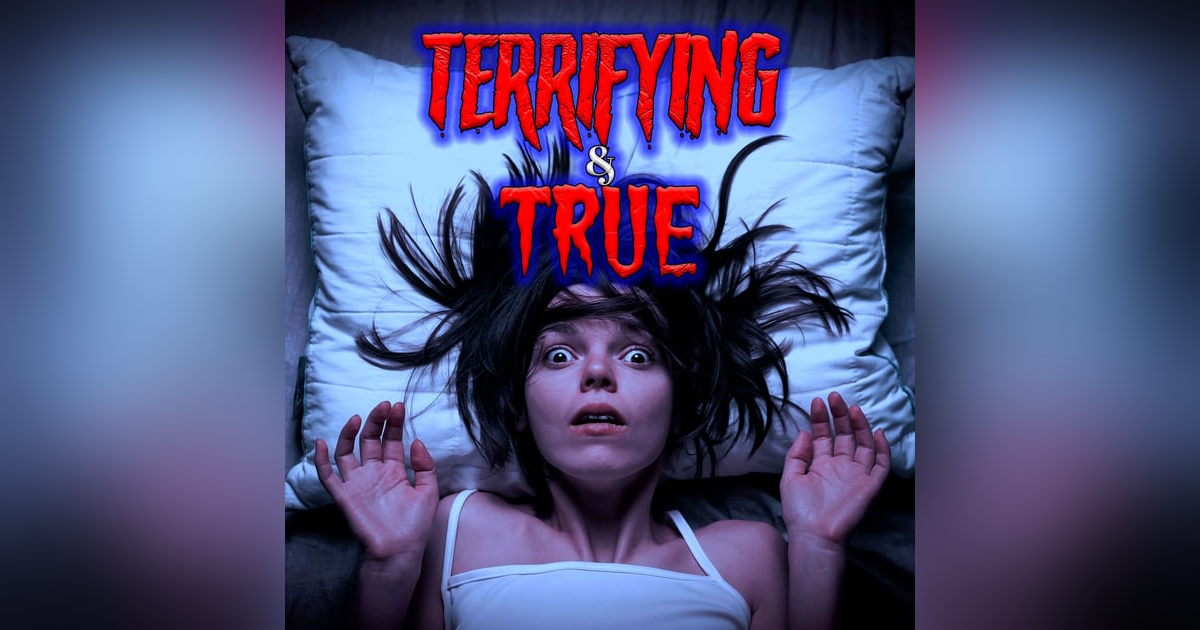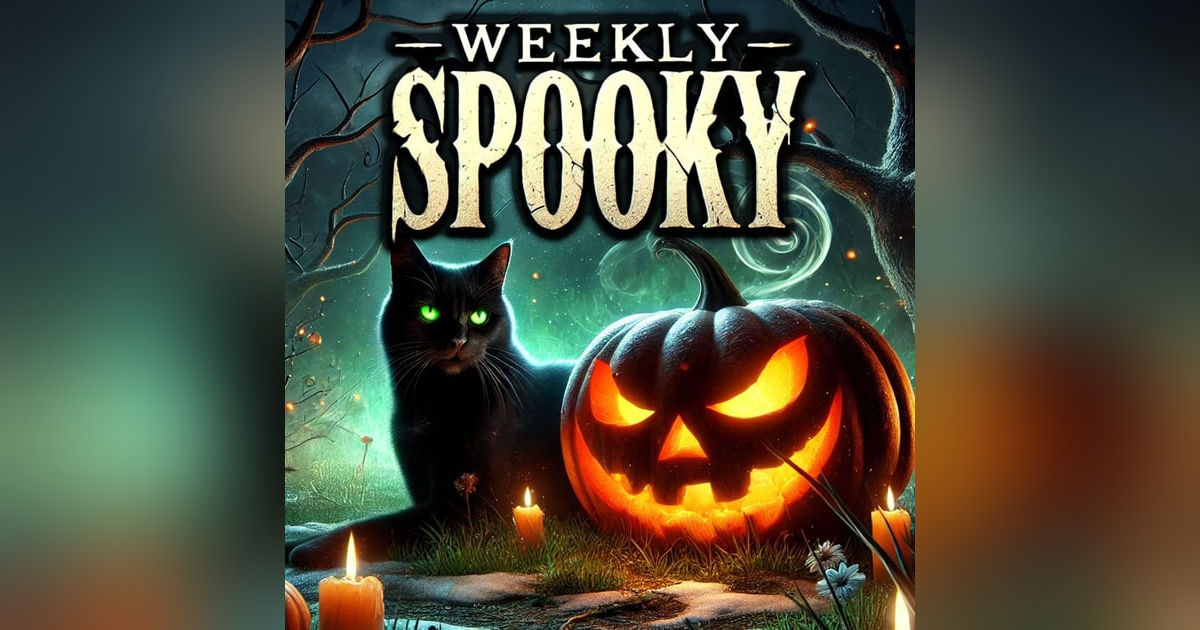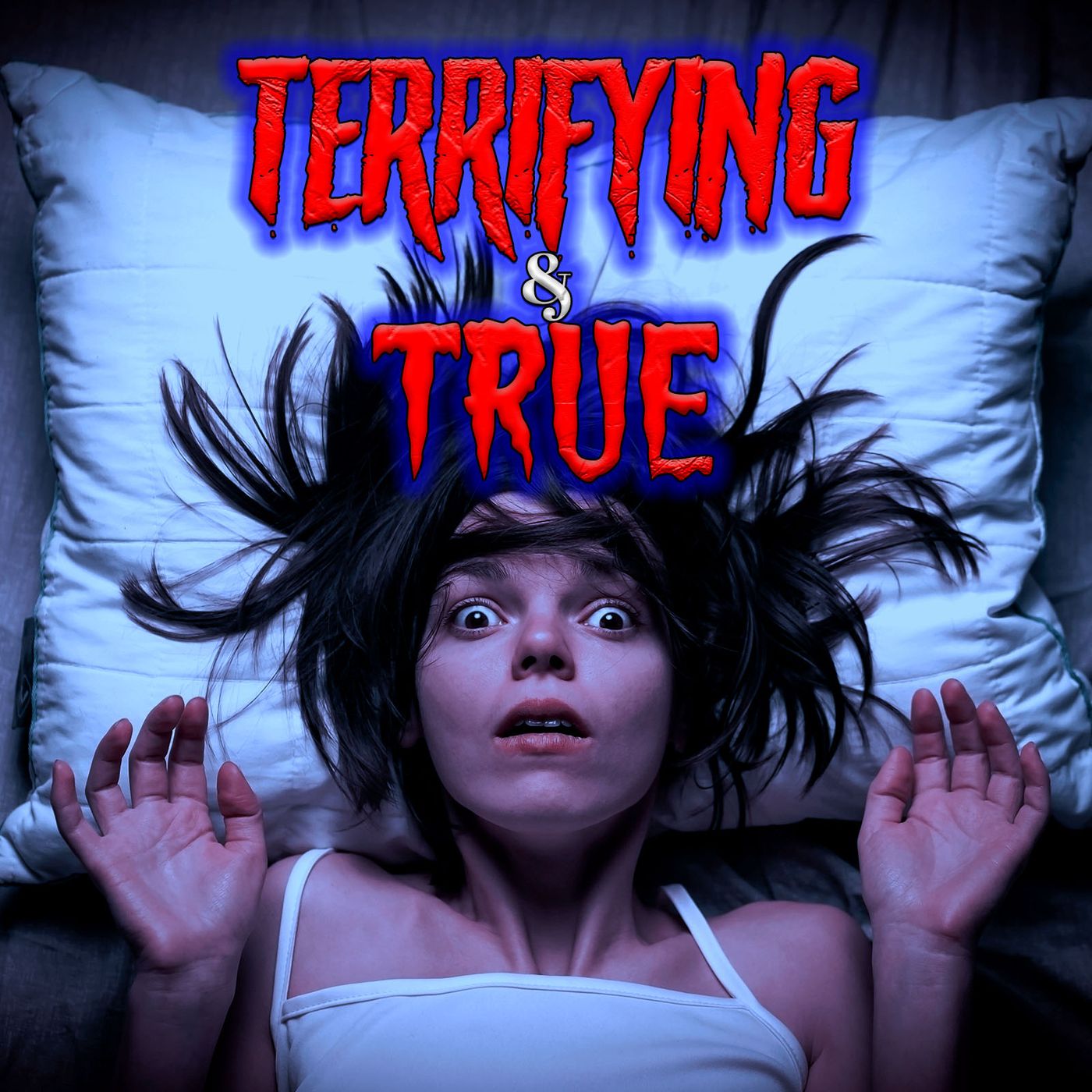Terrifying & True | Halloween Candy Panic - Are Your Treats POISONED?

"Make sure you check your candy before you eat it." It's a Halloween mantra you've likely heard your whole childhood. A need to make sure no one has tampered with your holiday treats. Is there actually danger in taking candy from your neighbors or is...
"Make sure you check your candy before you eat it." It's a Halloween mantra you've likely heard your whole childhood. A need to make sure no one has tampered with your holiday treats. Is there actually danger in taking candy from your neighbors or is the fear just too delicious not to snack on?
We are telling that story today, on Terrifying & True
Support us on Patreon http://patreon.com/IncrediblyHandsome
Contact Us/Submit a Story
twitter.com/WeeklySpooky
facebook.com/WeeklySpooky
WeeklySpooky@gmail.com
If you love our True Crime stories make sure to come back next week!
Original Theme by Ray Mattis
Music by AudioBlocks
Produced by Daniel Wilder
Executive Producer Rob Fields
Find everything at:
WeeklySpooky.com
Candy on the Devil’s Birthday
Every year as kids start scarfing down their bags of well-earned Halloween candy, there’s always that one parent who checks each sugary treat, ensuring their child won’t be a victim of the dreaded candy poisoning. And for most of the other parents, the grim thought at least lurks in the back of their minds each October.
This hasn’t always been the case, though. Since its widespread adoption in the 1930s, trick-or-treating was always viewed as light-hearted, with little vampires, witches, and zombies knocking on neighbor's doors begging for candy. That is, until the early 1970s when a real fear began to creep through American streets. Was somebody poisoning children’s Halloween candy?
The worry is still apparent in today's world, but how much of it is true? Are there actually evil minds preying on kids at random each Halloween?
While skeptics write it off as just being an urban legend, there are some real cases of shocking, and even deadly, stories of poisoned Halloween Candy.
However, many of them aren’t from random strangers.
Going door to door asking for candy only began in the mid-1900s, but the practice of putting on a small performance in exchange for a sweet treat has been a Halloween tradition since the 16th century. By the 1930s, though, trick-or-treating as we know it today was solidly embedded in American culture as numerous radio dramas and children's magazines talked about it.
Initially, handmade treats were the standard and often encouraged. It showed the recipient the baked goods or candies were made with love and personalized for every child.
However, by the 1960s, things shifted. Women were working more outside of the home, and foods of convenience were preferred, because they simply didn’t have hours of time to pour into baking.
Additionally, neighborhoods were becoming more integrated, and people became cautious of who was giving their children candy due to racism, sexism, and just general anxiety about societal changes.
Promotion for treat-sized packaging began in the 1950s but really began dominating in the 60s. Wrapped and branded candies were not only easier to just grab and go, but seemed inherently safer.
The American culture continued to shift through the 70s and led to the beginning of the satanic panic, which consisted of conspiracy theories about satanic cults committing mass ritual abuse. The flames of this fear were fanned by a massive amount of sensational portrayals in the media.
Many households at the time, and still today, believed Halloween was the devil’s holiday or the devil's birthday. This led many Christian communities to fear allowing children to participate in Halloween festivities. Community and religious leaders hosted alternative activities in response, such as the well-known ‘trunk-or-treats’ where people pass out candy from the trunks of their cars in a contained setting. This assured parents that the candy their children were receiving was safe, as they were acquainted with the adults the children came in contact with.
It’s believed the first report of poison in Halloween candy was in 1959, when a Californian dentist named Dr. William Shyne distributed 450 candy-coated laxative tablets to children on Halloween night. His motive behind this remains unknown. Many believe it was an attempt to prove a point about the perils of sugar.
Regardless, thirty of the kids fell ill, but they all recovered without incident. William was charged with an outrage of public decency and unlawful dispensing of drugs.
A few years later, in 1964, a Long Island resident, Helen Pfeil, became annoyed with children she deemed too old for trick-or-treating. Although this seems like a ridiculous reason to be irritated, Helen thought otherwise.
On Halloween night, she made special treats for the children. When they arrived, Helen handed out buttons of arsenic, ant poison, dog treats, and steel wool pads that she had wrapped in tin foil. The buttons full of arsenic had a skull and crossbones decorated on the top of them.
In total, she gave out 12, but luckily no children were seriously injured.
Helen, who even had two children of her own, was later charged with child endangerment after pleading guilty.
In 1968, the New York Times reported thirteen cases of children in New Jersey finding not poison, but razor blades in their apples.
In the majority of these cases, though, the children were unharmed.
Two detailed studies were conducted in 1972 and 1982 determining all of these claims were hoaxes, despite many coming forward and insisting otherwise. However, the fear of this happening was so strong that New York passed a law criminalizing anyone who tampered with Halloween candy.
The scare really began in 1970, when on October 28, The New York Times suggested the possibility of strangers using the trick-or-treat tradition to target and poison children.
The author, Judy Klemesrud, wrote of two unconfirmed incidents in upstate New York. She wondered if that “plump red apple” from the “kindly old lady down the block may have a razor blade hidden inside.” Many readers accepted this column as a definitive fact and, just two days later, it was used as inspiration.
On Halloween night of 1970, 5-year-old Kevin Totson had been visiting his uncle when he died from a heroin overdose. When questioned by the police, his uncle claimed that Kevin’s Halloween candy must have been poisoned.
It was later discovered that Kevin had apparently swallowed a capsule full of heroin, and his uncle trickled the substance on his candy to make it appear as if it was a random poisoning. The amount of heroin found in Kevin's body was more than what had been found sprinkled on the candy.
Another incident in 1974 terrified parents in Pasadena, Texas, and became a national news story.
8-year-old Timothy O’Bryan was poisoned by a potassium cyanide-laced Pixy Stix that was ostensibly collected while he was trick-or-treating. After investigating, though, the police quickly pointed blame to his own father, Ronald O’Bryan, when they discovered the $40,000 life insurance policy he’d just recently placed on Timothy.
Not only did Ronald poison his own son, but to cover his tracks, he also distributed the 21-inch Pixy Stix to his daughter and three other children in the neighborhood. Fortunately, his daughter and the three others didn’t eat the candy. One tried to, but failed to rip apart the staple Ronald had placed to close the Pixy Stix.
Ronald became known as The Candy Man Killer and The Man Who Killed Halloween. He was convicted of capital murder, and executed by lethal injection in 1984.
Although there hadn’t been any random deaths of poisoned Halloween candy at this time, the terrifying narrative continued to gain traction.
In October of 1983, advice columnist Abigail Van Buren, better known as “Dear Abby,” wrote a Halloween-themed article titled “A Night of Treats, Not Tricks.” In the column, she stated, among other things, “Somebody’s child will become violently ill and die after eating poisoned candy or an apple containing a razor blade.”
Twelve years after this, columnist Ann Landers, also Dear Abby’s sister, wrote a Halloween column titled “Twisted Minds Make Halloween a Dangerous Time.” Echoing the concern from years before, she stated, “In recent years there have been reports of people with twisted minds putting razor blades and poison in taffy apples and Halloween candy. It is no longer safe to let your child eat treats that come from strangers.”
However, these terrible acts are almost entirely myths. University of Delaware sociologist Joel Best has investigated allegations of strangers poisoning kids’ Halloween candy for nearly thirty years. He reports that he hasn’t identified one single confirmed case of a random stranger murdering a child in this specific manner.
He highlighted other examples of people unknowingly giving away tainted candy, or in some cases ant poison used as a gag gift among teenagers, but the scare of making trick-or-treating unsafe is unfounded.
If it’s so fabricated, then, why are parents still terrified each year?
Myths, or in this case urban legends, act as proof and reinforce existing beliefs. They help to validate and legitimize fears as genuine. Urban legends also provide a source of entertainment, even when it’s terrifying and unpredictable.
It’s easy to see how these legends have taken hold, because of how alarming they are. After all, parents spend 364 days a year telling their kids to not take candy from strangers, as it could be laced with an unknown substance or could be used to lure the child away. But for one day out of the year, they give a thumbs up to take treats from random strangers at every house in the neighborhood.
It’s only natural for parents to be at least a little nervous. In addition, during the 1980s, Americans were seeing poisoning all over the news.
In 1982, seven people were murdered after ingesting potassium cyanide-laced Tylenol pills. The hypothesis was that someone had taken the pills off of the store shelves, put the poison in the capsules, and placed the bottles back on the shelves. No suspects were charged for the murders, and a number of copycat crimes arose following the incident, killing several more people at random.
What is more common than poisoned candy, though, is sharp objects being placed in random trick-or-treater's candy. Fortunately, even this is incredibly rare.
Since 1959, there have been nearly 80 reports of razor blades or sharp objects found in or protruding from food. Many of them were also found to be hoaxes and were almost always placed in the candy of a friend or relative as a prank.
The first organized attempt to seriously injure children with Halloween candy didn’t occur until the year 2000. James Joseph Smith of Minneapolis was known for handing out Snicker bars to local trick-or-treaters that he had maliciously filled with needles. While several children did attempt to bite into and eat the candy bars, only one teenager was injured. It was a relatively small prick, though, and he didn’t need medical attention. James was charged with one count of adulterating a substance with the intent to cause death, harm, or illness.
Another incident that same year wasn’t poisoning, but rather marijuana. Some parents found Snickers wrappers stuffed with marijuana. The police were quick to assess the situation and trace the chocolates back to a man who seemed to be genuinely baffled about the entire situation.
After investigating further, the police and the suspect were able to determine what had happened. The man was working in the dead letter office at a postal facility when he came across a bag of Snickers in a lost package. He felt it was perfect for his candy bowl at home and he would use them to give out as treats. But what he didn’t realize was that the chocolate bars were actually someone’s attempt at smuggling pot through the postal service.
The urban legend of how commonly Halloween candy is poisoned will likely always affect parents' decisions on October 31.
At times, many communities have banned trick-or-treating. Hospitals in some areas have offered to give X-rays for Halloween candy. States have created bills requiring jail time for those who tamper with Halloween candy.
While there have been incidents where Halloween was ruined with poisoned candy and sharp, protruding objects, almost all cases were deemed as either pranks or in-home tragedies used as a cover.
However, parents will continue searching their children’s pumpkin buckets and weighed down pillow cases… just in case that a bag full of treats may contain one devious and evil Halloween trick.














